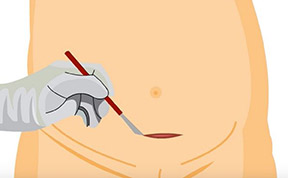The World Health Organization (WHO) on Thursday said it has revised a benchmark used by health professionals worldwide in caring for women during childbirth because it has caused a surge in interventions like cesarean sections that could be unnecessary.
Since the 1950s, a woman progressing through labor at a rate slower than one centimeter of cervical dilation per hour has been considered “abnormal”, said Olufemi Oladapo, a medical officer with the World Health Organization’s department of reproductive health.
When doctors and other care providers confront labor moving slower than that rate, “the tendency is to act”, either with a cesarean section or with the use of drugs like oxytocin that speeds up labor, leading to the “increased medicalization” of childbirth, he said.
In its new guidelines, the WHO called for the elimination of the one centimeter per hour benchmark.
“Recent research has shown that that line does not apply to all women and every birth is unique,” Dr. Oladapo told reporters in Geneva.
“The recommendation that we are making now is that that line should not be used to identify women at risk of adverse outcome,” he added.
While rates of interventions like c-sections vary among regions, WHO has seen what it considers a worrying rise in such practices worldwide.
Interventions that were once used to manage complicated childbirths have become commonplace, the agency warned.
“Pregnancy is not a disease and childbirth is a normal phenomenon, where you expect the woman to be able to accomplish that on her own without interventions,” Mr. Oladapo said.
“However, what has been happening over the last two decades is we have been having more and more medical interventions being applied unnecessarily to women and we have situations where several women are getting too many interventions that they do not need.”
While cautioning against any one-size-fits-all benchmarks, the new WHO guidelines say that for a woman delivering her first child, any labor that does not extend beyond 12 hours should be considered normal.
For a subsequent pregnancy, the figure drops to less than 10 hours.
Ref : http://www.thehindu.com/sci-tech/health/who-issues-new-guidelines-to-curb-surge-in-c-sections/article22764438.ece#

